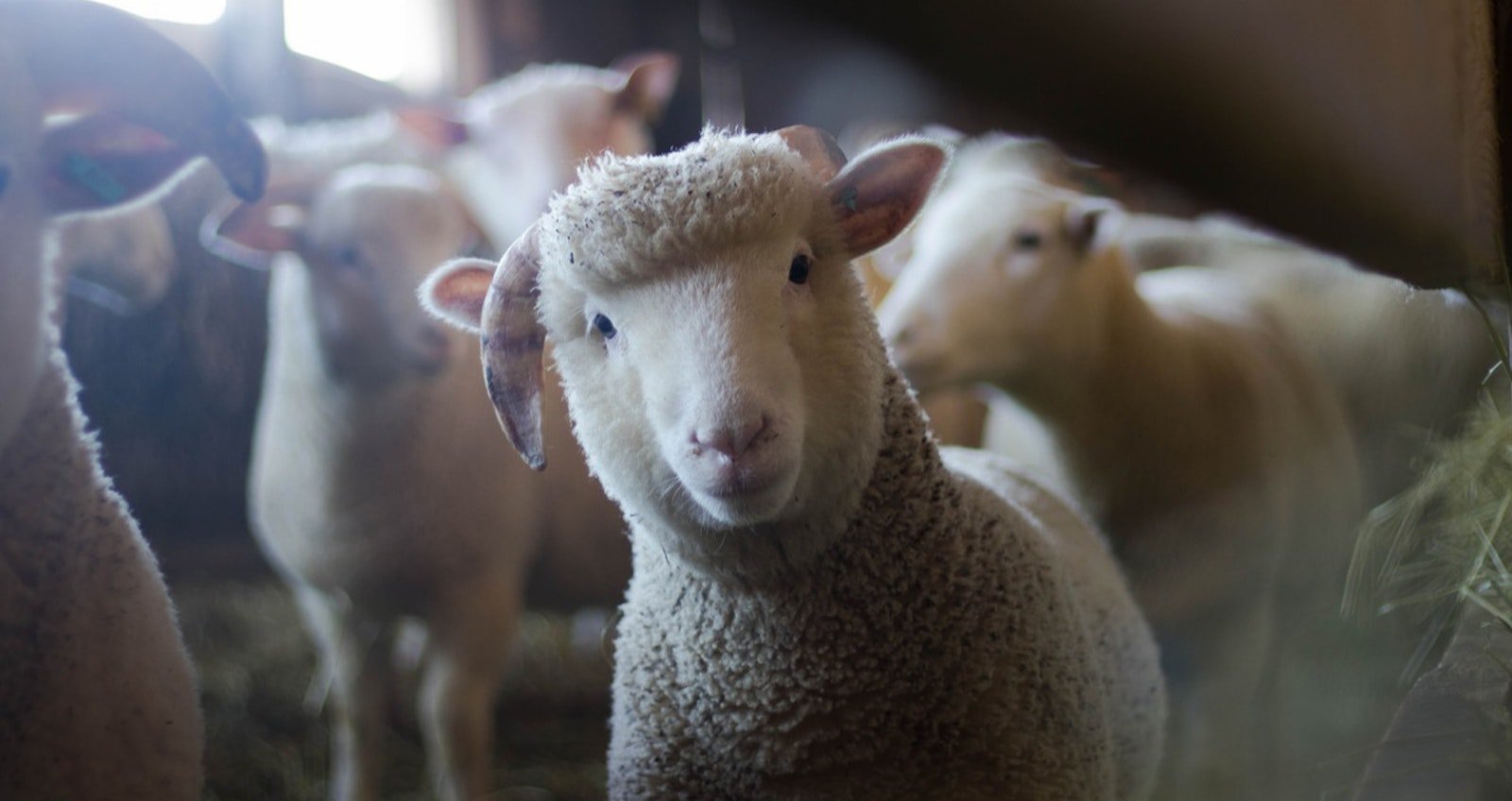My handspinning journey took some interesting turns after I moved to Kansas in 2000 and began teaching at a small university. Despite—because of?—the demands of my career, I kept playing with fiber. Since the university’s art department offered textile classes, I now had access to new some new toys and expert advice. These new resources came in handy as I contemplated processing a great big fleece that I had just acquired—earlier fiber preparation efforts had been fine for smaller amounts of raw wool, but they would take forever on a fleece so large.
My new fleece came from a weaver in the biology department: she raised sheep and when I offered to help with the spring shearing, she paid me in wool. What a great trade! All I did was sweep up and move bags of fleece around, and I scored a beautiful fleece from a sheep named Maggie. I no longer remember Maggie’s exact parentage but suspect she was a medium-wool breed. Her fleece came in lovely shades of gray, from pale silver to medium tones that I loved at first sight—we gray-haired ladies have to stick together! I wanted to create a yarn with character, with some natural shading. Since Maggie was a big girl, I also wanted to embrace the Industrial Revolution: certain techniques and tools would speed up processing about eight pounds of raw wool.
Maggie’s wool has so far produced a handy bag with multiple pockets and a sweater.
Scouring Wool in a Washing Machine
Scouring the fleece using my new washing machine (thanks, Mom!) seemed like a better option than the bathtub. I separated Maggie’s wool into five or six zippered pillow protectors, filled the machine with hot water and a squirt of Dawn dishwashing liquid, and lowered each zipped bag of fleece into the machine’s tub. With a dowel, I poked the bags fully underwater—no stirring, just poking! Everything soaked for a while, then I started the machine’s spin cycle. I repeated this process until all of the lanolin had washed away. Finally, I gave the fleece a nice soak in clear water to rinse out the soap. The washing machine could hold three pillow protectors at a time, and it took at least three washes with Dawn to fully scour the wool; in other words, six or seven washes left me with clean, damp fleece that I spread across a big airplane-style sweater rack.
How much time and effort did I save? The biggest gains came from a faster drying time and the convenience of a fleece-free bathtub. In the years since this first trial with Maggie, trial and error have taught me a few more lessons:
- Dawn is inexpensive, but you’ll save on water bills and soaking time with professional scours or wool washes. With these products, most fleeces only need one bath; only the greasiest breeds require a second. Also, it's much less water-intensive to rinse out a scouring wash than to rinse out dish soap.
- Before walking away from the washer, set the dial on “spin” so it doesn’t start agitating. Machines can create giant felted balls in minutes, and there is no way to salvage a felted fleece.
- Set a timer for twenty minutes, so that you can spin out the wet fleece before it cools off and any remaining lanolin re-coagulates.
These days, I can completely wash even a very large fleece in a morning or afternoon. The only downside: if I want to follow all the traditional rules for combing and spinning a worsted yarn, the locks are all jumbled together. I’d have to work with much smaller bags of fiber to preserve lock structure, as Margaret Stove recommends.
Using a Drumcarder
Once my wool had dried, I carted it over to the art department so I could use their drumcarder. This handy gizmo made quick work of the fleece (relatively speaking; even after washing, I probably had five or six pounds of wool to process). I fed wool into the feeding tray without any regard to color, and the resulting batts had lovely streaks of lighter and darker grays in them. Where handcarding drove me to the brink of insanity, drumcarding made my heart sing. Spinning from batts also gave me great satisfaction.
Maggie’s 2-ply Aran-to-bulky yarn looks beautiful and full of character, just as I’d hoped. However, it wasn’t the softest yarn I’ve ever made. I knitted and fulled a teacher’s bag with handy pockets that I carried around for the next fourteen years, and it’s still in great shape. Then in 2012, I adapted Ann Weaver’s King of Confidence cardigan pattern: it became a pullover and, thanks to my Knittrick app, I figured out how to make it fit at a different gauge.
Sweater fabric over a light box
This design gave me the chance to use other handspun yarns and a commercial yarn in the colored yoke. Since the contrast yarns were softer than Maggie, their placement at the neck made the sweater more comfortable to wear. I’ve still got at least two pounds of yarn waiting for another perfect project!
What’s the Right Method for You?
It took me several years of trial and error to find my preferred methods of scouring and fiber prep, and those years taught me invaluable lessons. Though I don’t choose to use handcarders, it was worthwhile to try them out. Plus I needed time to save up for a drumcarder! Talk to other spinners, read Spin Off articles about different prep techniques, and borrow equipment whenever you can—it would have been awful for me to invest a lot of money in a drumcarder, only to discover that I hated this technique. If you’re new to any of these methods of fiber prep, check out our free eBook on wool combing and carding. (Once you’ve gained access to this eBook, you can download any of our other free spinning resources.)
—Deb



